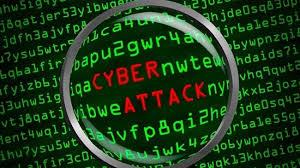Cyber-Threats and Attacks Are all Too Real
Since the Sony hacking scandal broke, there has been intense discussion about cyber-threats! FBI moved cyberthreats to top of law-enforcement agenda because it’s such a serious concern.
Former FBI director, James Comey, said, “I see a whole lot of hacktivists, I see a whole lot of international criminal gangs, very sophisticated thieves.” “I see people hurting kids, tons of pedophiles, an explosion of child pornography.” No joke. President Obama recently referred to the internet as being the wild west. “The U.S. will also turn to the international community to come up with “rules of the road” for cyberspace.”
It’s unfortunate that it always takes an attack or incident for Washington to get with the program and do something that they’ve been all too aware about for a long time.
There is a great deal of talk about the potential of these cyber attacks affecting businesses, and shutting down infrastructure. But what about our children? Little is being done in to educate our children, tweens and teens. Aren’t they the most vulnerable of us all?
Cyber-threats and the Vulnerability of Kids
 Kids are getting computer devices at younger and younger ages and don’t have the maturity or life experience and knowledge to deal with the many risks online that includes cyberthreats. Every time a child uses their device, they enter a virtual, borderless, unregulated world where they can engage with anyone across the globe and see all kinds of content good and bad. The rare but all too real risk from online predators; online trolls for which even Mark Zuckerberk is not immune. Kids are vulnerable to accessing pornography intentionally or unintentionally, seeing violent content online and going to sites that are inappropriate for their age. Phishing, smishing and pharming attacks are becoming the norm. Many adults know how to avoid them. What about kids that are being sent these nefarious links? Do they have the knowledge, and awareness to avoid them. Aren’t they one of the weak links in the cyber-security scenario?
Kids are getting computer devices at younger and younger ages and don’t have the maturity or life experience and knowledge to deal with the many risks online that includes cyberthreats. Every time a child uses their device, they enter a virtual, borderless, unregulated world where they can engage with anyone across the globe and see all kinds of content good and bad. The rare but all too real risk from online predators; online trolls for which even Mark Zuckerberk is not immune. Kids are vulnerable to accessing pornography intentionally or unintentionally, seeing violent content online and going to sites that are inappropriate for their age. Phishing, smishing and pharming attacks are becoming the norm. Many adults know how to avoid them. What about kids that are being sent these nefarious links? Do they have the knowledge, and awareness to avoid them. Aren’t they one of the weak links in the cyber-security scenario?
A Cyber-threat Scenario That Begins at Home
Here’s a scenario for you to think about. A hacker sends what’s considered a “low-end attack” by sending spam out to millions of email addresses, or phones or via social networking sites hoping that a child will fall for it and click on a poisoned link. Your vulnerable, naive child clicks on a message with a link sent to them on their mobile device saying they just won $5000. They click on it and now malware has been placed on their device. At home they are part of the family network of computers using the same server. Dad or Mom come home from work and access the same network. Now the malware spreads to their devices. They go to work and access the network of their business. The malware takes hold within the business network and no one is aware that this is happening.
The point is that if we can get online safety right with our kids, and get parents involved we can go along way in helping to prevent some of the cyber-threats and attacks. Whether stealing someone’s important information like bank account data and cleaning them out, or placing malware on a child’s computer that allows a predator to turn on their webcam, to putting malware on a home computer network that could end up being spread beyond the home… We need to be teaching parents and kids.
This is Not Just an Issue for the FBI
This is not just a high level law enforcement issue. Every child and adult, family can potentially be impacted. There is a message that resonates. It sometimes takes a village to raise a child. It takes a community of Internet users to thwart off cyber-threats. Parents need to be aware of what their kids are doing and how they’re behaving online. Teach them about the risks to help prevent them.
People are really good at recognizing socially engineered attacks like phishing and machines are really good at recognizing programmatic attacks like viruses or Trojans. So I want to emphasize the people part and help them learn how to avoid an attack. Recognition could be as simple as noticing a letter change in a URL, or validating the sender in a message.
 Kids have quick fingers online. We need to teach them to pause, and really think before they click.
Kids have quick fingers online. We need to teach them to pause, and really think before they click.
Malware is Silent
Malware is silent. It doesn’t brandish a gun, or break in to your home knocking over a lamp loudly in the process so that you hear it and call police, or set off a loud alarm. It can go unnoticed because it’s silent and can come from far away. Many cyber thugs come from other countries to do their dastardly deeds. The Sony attack came from North Korea. The innocent computer user or business is unaware of the treachery happening. Also, most wars are won or lost by the military. Many of these attacks are happening on innocent citizens and businesses. It’s a silent war.





